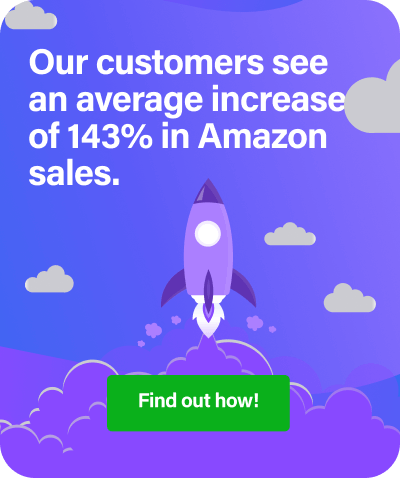At first glance, the only thing that online retailers seem to have in common with their brick-and-mortar counterparts is to sell stock. But upon closer inspection, the two share more marketing strategies than initially appears and can in fact point to an online offline retail strategy. Here are three crucial reasons they need to be synced.
1. The Price Is Right
Regardless of what you’re selling, you’ve got to ensure your price is right for the buyer that’s looking at your products. That doesn’t mean you have to be the cheapest, but you have to be in the right bracket that a consumer is willing to pay. In an offline environment, your staff, shop interior, customer service levels and branding all have to set the scene for the price—online, particularly when selling across major marketplaces like Amazon and Rakuten, you simply have to ensure your products sit within the right pricing structure and have the right pricing rules in place so that you’ll reach the eyes of the online shopper—and that means using automated repricing software to keep pricing competitive at all times.
2. Tell Your Buyers What They Want
One of the easiest—and most under-utilised—strategies when it comes to syncing online and offline marketing strategies is the call-to-action. If you want your customers to buy your stock, you need to communicate that, but respect the different contexts you’re delivering your message (in-store, on mobile phones, on desktop computers, via third party marketplaces). Too many retailers sit back on their haunches and expect sales once their stock is listed or put on shelves, but it doesn’t work that way when there is so much competition competing for customers’ dollars.
Think of television adverts for a second, and how often they hammer home the message that your life won’t be complete without Product X. It’s a rather over-the-top example, but the concept is an effective one. Instead of being as blatant as adverts, subtly drop in a call-to-action here and there with lines like “click here for the daily deal”, “sign up to get an insider discount”, or “discover what you’ve been missing with X”, and improve your product listings to align themselves with what customers are searching for—not bland manufacturer descriptions that do little to entice a buyer.
3. Practice Consistent Branding
There’s almost nothing worse than customers feeling like they’re visiting a new store or site every time they experience your product. If you’re guilty of this, it’s time to change direction. Picture Google, or Yahoo, or eBay, or Starbucks, or any other brand that has a consistent brand platform across their media. It’s effective because it stays the same, and customers learn to associate a branding image or sentence with the company.
In terms of online and offline marketing, the key is to use the same logo, colours, language, words and phrases, typesetting, and imagery consistently on everything—it’s the glue that will hold your various sales channels together.
4. Give Them a Reason to Come Back
You’ve read all the books and followed all the practices, but something’s missing: your customers are either not staying in your brick-and-mortar store very long, they’re not buying enough high-priced items, or your site bounce rate is too high. What went wrong?
Chances are, you’re not providing enough of an incentive for customers to make a return visit, or to visit you on the other platforms or channels in which you sell your wares. One way to counteract this is through QR codes, those little black-and-white squares that are seemingly everywhere. It’s a brilliant marketing strategy when you closely examine it because it seamlessly blends online and offline marketing in one fell swoop.
It seems like just about everyone has a smartphone, so capitalise on that by posting QR codes under your (consistently branded) logo or slogan. Shoppers in your offline store only have to scan the QR code and then they’re taken right to your website, which should have all the other information they need to make an educated purchase. One tip to keep in mind: set up a mobile desktop on your site so it’s easier to view on smartphones, but enable the option for desktop view so shoppers have a choice.
Online and offline marketing strategies don’t have to be miles apart, and nor should they—in fact their amalgamation for retailers of all kinds is heralding the advent of ‘omnichannel retailing‘. By syncing the two, you stand a much greater chance of not only attracting new customers, but retaining your existing ones to build long relationships with.
[fusion_builder_container hundred_percent=”yes” overflow=”visible” margin_top=”40″ margin_bottom=”” background_color=”rgba(255,255,255,0)”][fusion_builder_row][fusion_builder_column type=”1_1″ background_position=”left top” background_color=”” border_size=”” border_color=”” border_style=”solid” spacing=”yes” background_image=”” background_repeat=”no-repeat” padding=”” margin_top=”0px” margin_bottom=”0px” class=”” id=”” animation_type=”” animation_speed=”0.3″ animation_direction=”left” hide_on_mobile=”no” center_content=”no” min_height=”none”][fusion_separator style=”shadow”/]
[/fusion_builder_column][/fusion_builder_row][/fusion_builder_container][fusion_builder_container hundred_percent=”yes” overflow=”visible”][fusion_builder_row][fusion_builder_column type=”3_4″ last=”no”]
Want Pro Tips for Selling on Amazon?
[/fusion_builder_column]
[fusion_builder_column type=”1_4″ last=”yes”]
[/fusion_builder_column][/fusion_builder_row][/fusion_builder_container]


